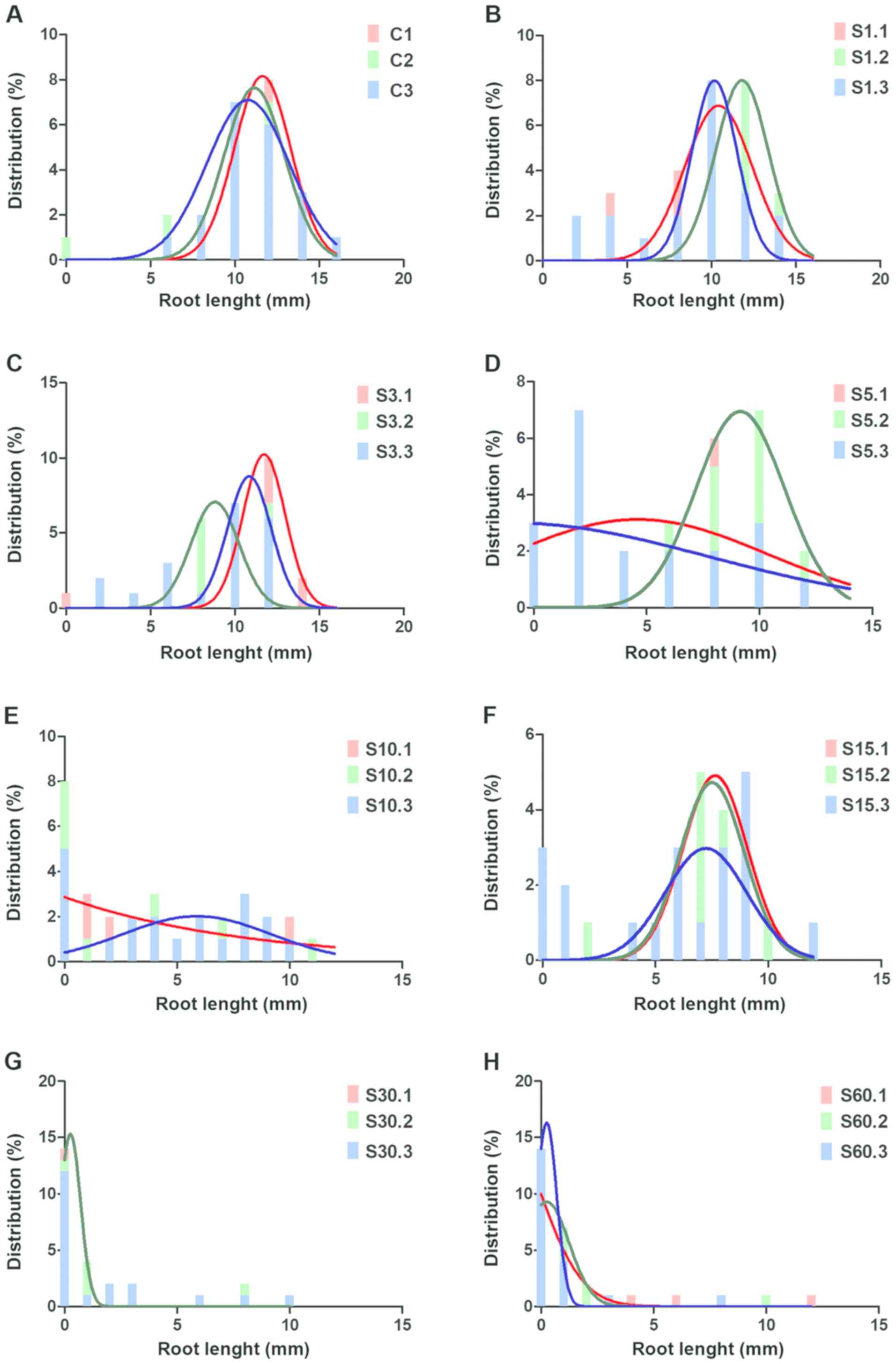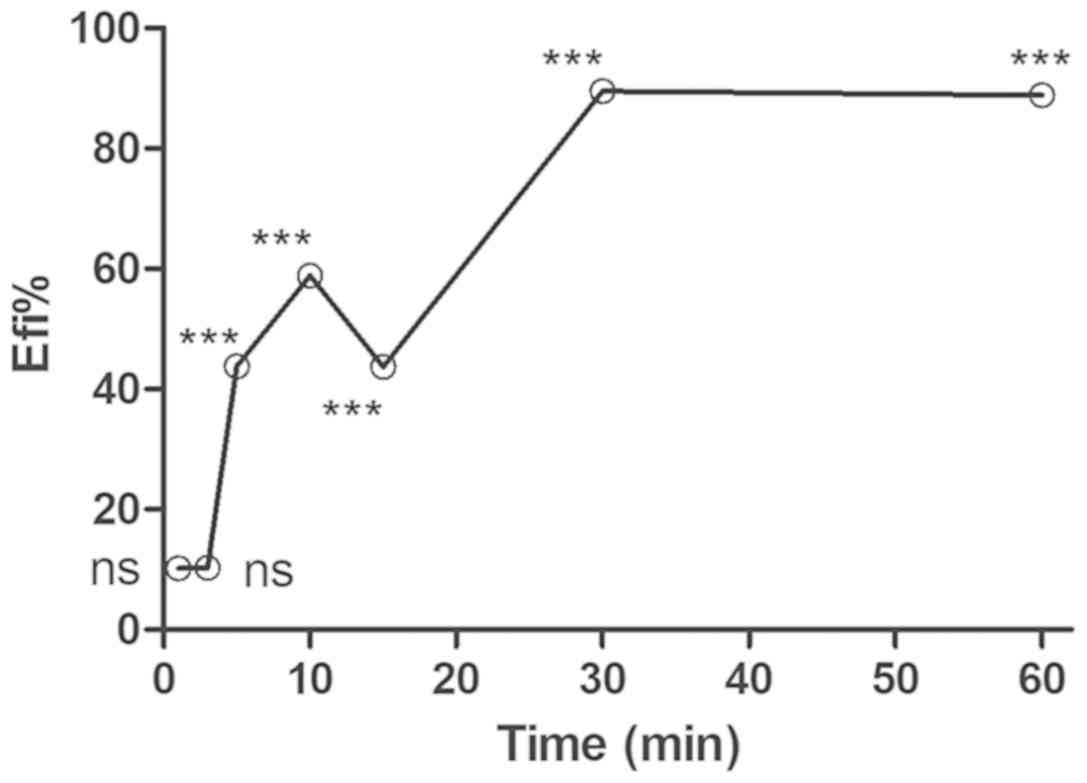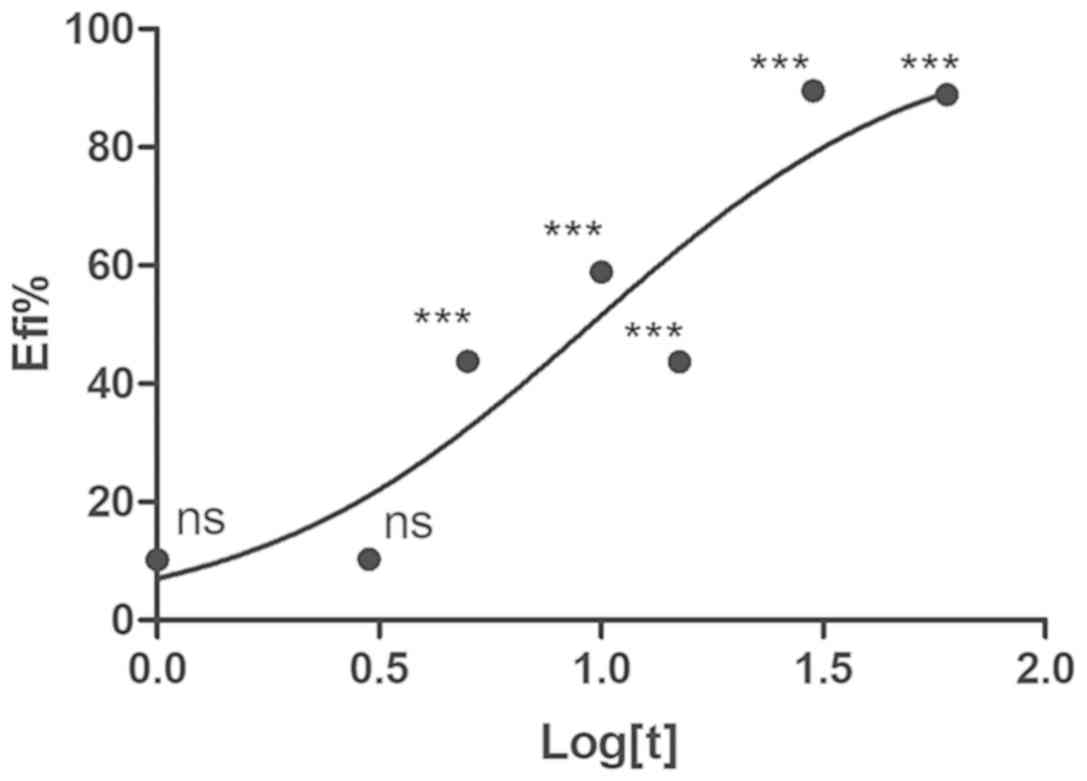|
1
|
Nitulescu GM, Draghici C and Olaru OT: New
potential antitumor pyrazole derivatives: Synthesis and cytotoxic
evaluation. Int J Mol Sci. 14:21805–21818. 2013.PubMed/NCBI View Article : Google Scholar
|
|
2
|
Olaru OT, Zanfirescu A, Nitulescu GM,
Nitulescu G, Dinu-Pirvu CE, Anuta V, Tsatsakis A, Spandidos DA,
Margina D and Seremet OC: Predictive power of the Triticum
root elongation test for the assessment of novel anti proliferative
therapies. Int J Mol Med. 44:16–24. 2019.PubMed/NCBI View Article : Google Scholar
|
|
3
|
Margină D, Olaru OT, Ilie M, Grădinaru D,
GuȚu C, Voicu S, Dinischiotu A, Spandidos DA and Tsatsakis AM:
Assessment of the potential health benefits of certain total
extracts from Vitis vinifera, Aesculus hyppocastanum and Curcuma
longa. Exp Ther Med. 10:1681–1688. 2015.PubMed/NCBI View Article : Google Scholar
|
|
4
|
Guzman-Rangel G, Montalvo D and Smolders
E: Pronounced Antagonism of Zinc and Arsenate on Toxicity to Barley
Root Elongation in Soil. Environments. 5(83)2018. View Article : Google Scholar
|
|
5
|
Zhu G, Jiang B, Yang G, Li J and Ma Y:
Toxicity thresholds based on EDTA extractable nickel and barley
root elongation in Chinese soils. Int J Environ Res Public Health.
15(15)2018.PubMed/NCBI View Article : Google Scholar
|
|
6
|
Jaskowiak J, Kwasniewska J,
Milewska-Hendel A, Kurczynska EU, Szurman-Zubrzycka M and Szarejko
I: Aluminum Alters the Histology and Pectin Cell Wall Composition
of Barley Roots. Int J Mol Sci. 20(20)2019.PubMed/NCBI View Article : Google Scholar
|
|
7
|
Suslick KS, Hammerton DA and Cline RE:
Sonochemical hot spot. J Am Chem Soc. 108:5641–5642. 1986.
View Article : Google Scholar
|
|
8
|
Wells PN: The effect of ultrasonic
irradiation on the survival of Daphnia magna. J Exp Biol.
49:61–70. 1968.PubMed/NCBI
|
|
9
|
Lürling M and Tolman Y: Effects of
Commercially Available Ultrasound on the Zooplankton Grazer
Daphnia and Consequent Water Greening in Laboratory
Experiments. Water. 6:3247–3263. 2014. View
Article : Google Scholar
|
|
10
|
Wang Q, Chen G, Yersaiyiti H, Liu Y, Cui
J, Wu C, Zhang Y and He X: Modeling analysis on germination and
seedling growth using ultrasound seed pretreatment in switchgrass.
PLoS One. 7(e47204)2012.PubMed/NCBI View Article : Google Scholar
|
|
11
|
Karabascheff N, Metev V and Kutov T: On
the effect of ultrasonic waves on the germination of corn. C R Acad
Bulg Sci. 19:305–312. 1966.(In German). PubMed/NCBI
|
|
12
|
Patero T and Augusto PED: Ultrasound (US)
enhances the hydration of sorghum (Sorghum bicolor) grains.
Ultrason Sonochem. 23:11–15. 2015.PubMed/NCBI View Article : Google Scholar
|
|
13
|
Ghafoor M, Misra NN, Mahadevan K and
Tiwari BK: Ultrasound assisted hydration of navy beans
(Phaseolus vulgaris). Ultrason Sonochem. 21:409–414.
2014.PubMed/NCBI View Article : Google Scholar
|
|
14
|
Gîrd CE, Costea T, Duţu LE, Popescu ML and
Nencu I: Phytochemical and phytobiological research regarding roots
of Heracleum Sphondylium L. and H. Palmatum Baumg.
Trends Toxicol Relat Sci. 1:84–93. 2017.
|
|
15
|
Goussous SJ, Samarah NH, Alqudah AM and
Othman MO: Enhancing seed germination of four crop species using an
ultrasonic technique. Exp Agric. 46:231–242. 2010. View Article : Google Scholar
|
|
16
|
Shin YK, Baque MA, Lee EJ and Paek KY:
Effects of activated charcoal, plant growth regulators and
ultrasonic pre-treatments on in vitro germination and protocorm
formation of Calanthe hybrids. Aust J Crop Sci. 5:582–588.
2011.
|
|
17
|
Wu M, Wang X, Jia Z, De Schamphelaere K,
Ji D, Li X and Chen X: Modeling acute toxicity of metal mixtures to
wheat (Triticum aestivum L.) using the biotic ligand
model-based toxic units method. Sci Rep. 7(9443)2017.PubMed/NCBI View Article : Google Scholar
|
|
18
|
Sadeghianfar P, Nazari M and Backes G:
Exposure to Ultraviolet (UV-C) Radiation Increases Germination Rate
of Maize (Zea maize L.) and Sugar Beet (Beta
vulgaris) Seeds. Plants. 8(49)2019.PubMed/NCBI View Article : Google Scholar
|
|
19
|
Izadifar Z, Babyn P and Chapman D:
Mechanical and Biological Effects of Ultrasound: A Review of
Present Knowledge. Ultrasound Med Biol. 43:1085–1104.
2017.PubMed/NCBI View Article : Google Scholar
|
|
20
|
Tsatsakis AM, Docea AO and Tsitsimpikou C:
New challenges in risk assessment of chemicals when simulating real
exposure scenarios; simultaneous multi-chemicals' low dose
exposure. Food Chem Toxicol. 96:174–176. 2016.PubMed/NCBI View Article : Google Scholar
|
|
21
|
Margina D, Nițulescu GM, Ungurianu A,
Mesnage R, Goumenou M, Sarigiannis DA, Aschner M, Spandidos DA,
Renieri EA, Hernández AF, et al: Overview of the effects of
chemical mixtures with endocrine disrupting activity in the context
of real life risk simulation (RLRS): An integrative approach
(Review). World Acad Sci J. 1:157–164. 2019. View Article : Google Scholar
|
|
22
|
Tsatsakis AM, Kouretas D, Tzatzarakis MN,
Stivaktakis P, Tsarouhas K, Golokhvast KS, Rakitskii VN, Tutelyan
VA, Hernandez AF, Rezaee R, et al: Simulating real-life exposures
to uncover possible risks to human health: A proposed consensus for
a novel methodological approach. Hum Exp Toxicol. 36:554–564.
2017.PubMed/NCBI View Article : Google Scholar
|
|
23
|
Fountoucidou P, Veskoukis AS, Kerasioti E,
Docea AO, Taitzoglou IA, Liesivuori J, Tsatsakis A and Kouretas D:
A mixture of routinely encountered xenobiotics induces both redox
adaptations and perturbations in blood and tissues of rats after a
long-term low-dose exposure regimen: The time and dose issue.
Toxicol Lett. 317:24–44. 2019.PubMed/NCBI View Article : Google Scholar
|
|
24
|
Tsatsakis A, Docea AO, Constantin C,
Calina D, Zlatian O, Nikolouzakis TK, Stivaktakis PD, Kalogeraki A,
Liesivuori J, Tzanakakis G, et al: Genotoxic, cytotoxic, and
cytopathological effects in rats exposed for 18 months to a mixture
of 13 chemicals in doses below NOAEL levels. Toxicol Lett.
316:154–170. 2019.PubMed/NCBI View Article : Google Scholar
|
|
25
|
Tsatsakis A, Tyshko NV, Docea AO,
Shestakova SI, Sidorova YS, Petrov NA, Zlatian O, Mach M, Hartung T
and Tutelyan VA: The effect of chronic vitamin deficiency and long
term very low dose exposure to 6 pesticides mixture on neurological
outcomes - A real-life risk simulation approach. Toxicol Lett.
315:96–106. 2019.PubMed/NCBI View Article : Google Scholar
|
|
26
|
Tsatsakis AM, Docea AO, Calina D, Buga AM,
Zlatian O, Gutnikov S, Kostoff RN and Aschner M: Hormetic
Neurobehavioral effects of low dose toxic chemical mixtures in
real-life risk simulation (RLRS) in rats. Food Chem Toxicol.
125:141–149. 2019.PubMed/NCBI View Article : Google Scholar
|
|
27
|
Docea AO, Gofita E, Goumenou M, Calina D,
Rogoveanu O, Varut M, Olaru C, Kerasioti E, Fountoucidou P,
Taitzoglou I, et al: Six months exposure to a real life mixture of
13 chemicals' below individual NOAELs induced non monotonic
sex-dependent biochemical and redox status changes in rats. Food
Chem Toxicol. 115:470–481. 2018.PubMed/NCBI View Article : Google Scholar
|

















